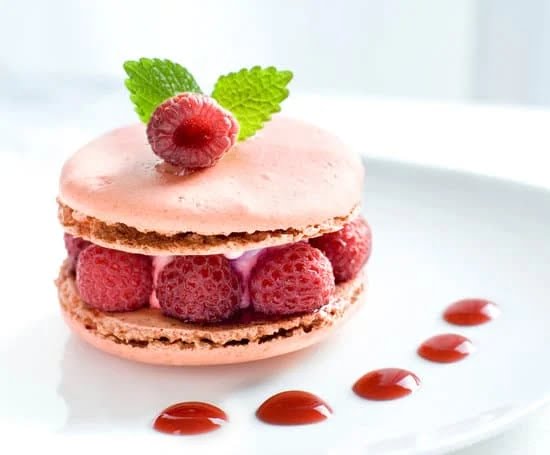Is it common to use a ribbon as a cake decor? The answer is yes, and the trend of using ribbons as cake decorations has been growing in popularity. In this article, we will delve into the world of ribbon cake decorations and explore the various aspects surrounding this trend.
Understanding the tradition behind using ribbons in cake decoration is essential to fully appreciate its enduring appeal. As we take a brief look at the history of using ribbons in cake decoration, we will uncover the significance and symbolism behind this tradition.
But ribbons aren’t just traditional; they are also versatile. The next section of this article will explore different types and styles of ribbons suitable for cake decoration. Whether it’s satin, organza, or grosgrain, there is a ribbon out there to suit every cake design and theme.
As we continue our exploration, we will also discover the benefits of using ribbons as cake decorations beyond their aesthetics. From adding texture to enhancing the presentation, ribbons can elevate any cake design to new heights.
So join us on this journey as we unravel the world of ribbon cake decorations. We will explore popular themes and occasions where ribbons can complement various designs, provide step-by-step guides for incorporating ribbons into your DIY projects, gather tips and tricks from professional bakers, address common concerns and even discuss alternative materials for decorating cakes.
The growing trend of using ribbons as cake decorations has caught the attention of many enthusiasts and professionals alike – it’s time to embrace the beauty and elegance that ribbons bring to our sweet creations.
Understanding the Tradition
Ribbons have long been a popular choice for cake decoration, adding an elegant and festive touch to any special occasion. The tradition of using ribbons as cake decorations dates back centuries, with its roots in various cultures around the world. Understanding the history behind this tradition can provide insight into why ribbons are still commonly used today.
In ancient Greece, it was believed that placing ribbons on cakes would bring good luck and prosperity to the celebrant. This belief spread to other civilizations, such as Rome, where ribbons were often intertwined with laurel wreaths and used to decorate cakes during celebrations and festivals.
During medieval times in Europe, ribbons became a symbol of wealth and status. Elaborate cakes adorned with luxurious ribbons made from silk or velvet were displayed at grand events hosted by nobility and royalty. These intricate cake decorations not only showcased the host’s affluence but also brought a sense of opulence and sophistication to the festivities.
Moving forward in history, during the Victorian era in England, ribbon-decorated cakes became increasingly popular as they symbolized beauty and femininity. Ribbons were carefully chosen to match the theme or color scheme of the occasion. Delicate satin or lace ribbons were used to create bows, rosettes, or cascades that added a romantic touch to wedding cakes or birthday treats.
Today, this ancient tradition continues as many individuals appreciate the timeless elegance that ribbons bring to their cake designs. Whether it be a simple satin ribbon tied around a birthday cake or an elaborate arrangement of ribbons cascading down a tiered wedding cake, incorporating this age-old tradition adds a touch of grace and refinement that is hard to replicate with other decorative materials.
Some popular types and styles of ribbons used in cake decoration include:
- Satin Ribbons: Smooth and lustrous satin ribbons are versatile options for various occasions. They come in a wide range of colors and widths, making it easy to match them with the cake’s theme or color scheme.
- Organza Ribbons: Lightweight and translucent, organza ribbons add a delicate and ethereal touch to cake decorations. They are often used to create airy bows or drapes that enhance the overall aesthetic appeal of the cake.
- Lace Ribbons: Intricate lace ribbons bring a vintage charm to cake decorations. They can be used as decorative borders, wrapped around tiers, or fashioned into bows for an elegant and romantic look.
- Grosgrain Ribbons: Known for their distinctive ribbed texture, grosgrain ribbons add a subtle touch of elegance to cake designs. They are particularly popular for formal events or cakes with a more sophisticated aesthetic.
No matter the type or style chosen, ribbons continue to be a beloved choice for cake decoration due to their versatility and timeless appeal. From traditional celebrations to modern events, ribbons have proven themselves as an enduring trend in the world of cake decoration.
The Versatility of Ribbons
When it comes to cake decoration, ribbons offer endless possibilities due to their versatility. Ribbons come in a wide variety of types and styles, allowing for creative and unique cake designs. Whether you’re going for a sleek and modern look or a more traditional and elegant style, there is a ribbon that can perfectly complement your cake.
One popular type of ribbon used in cake decoration is satin ribbon. Satin ribbons are smooth, glossy, and have a luxurious feel to them. They are often used to add an elegant touch to wedding cakes or other formal occasions. Satin ribbons come in various widths and colors, making them suitable for any cake design.
Another type of ribbon commonly used in cake decoration is organza ribbon. Organza ribbons have a sheer and lightweight texture, giving cakes a delicate and ethereal look. These ribbons are perfect for adding a soft and whimsical touch to birthday cakes or baby shower cakes. Organza ribbons can also be easily layered or gathered to create beautiful ruffles or bows on the cake.
In addition to satin and organza ribbons, there are also grosgrain ribbons, lace ribbons, and metallic ribbons that can be used for cake decoration. Each type of ribbon has its own unique texture, pattern, and color options, allowing bakers to explore different styles and create stunning designs.
Overall, the versatility of ribbons makes them an excellent choice for cake decoration. No matter what style you’re aiming for or what occasion you’re celebrating, there is sure to be a ribbon that can help bring your vision to life. Experiment with different types of ribbons and have fun exploring the endless possibilities they offer in creating truly beautiful and customized cake designs.
| Type of Ribbon | Description |
|---|---|
| Satin Ribbon | Smooth, glossy, and luxurious feel. Perfect for adding an elegant touch to wedding cakes or formal occasions. |
| Organza Ribbon | Sheer and lightweight texture. Gives cakes a delicate and ethereal look. Ideal for birthday cakes or baby shower cakes. |
| Grosgrain Ribbon | Durable and textured ribbon. Adds a more casual or playful element to cake designs. |
| Lace Ribbon | Intricate and delicate pattern. Creates a vintage or romantic feel on cake decorations. |
| Metallic Ribbon | Shiny and eye-catching material. Adds a touch of glamour and sophistication to any cake design. |
Beyond Aesthetics
Ribbons have become increasingly popular as a cake decoration not only for their aesthetic appeal, but also for the numerous benefits they offer. Using ribbons as cake decorations brings a unique and charming touch to any cake design, making it stand out and adding an extra element of sophistication. However, beyond their visual appeal, ribbons offer several other benefits that make them a versatile choice for cake decorators.
Firstly, ribbons are incredibly versatile in terms of color, texture, and width. With a wide range of options available in the market, it is easy to find the perfect ribbon that matches your desired cake design or theme. Whether you want a satin ribbon in soft pastel colors for a delicate and feminine look or a bolder grosgrain ribbon with vibrant hues for a more modern and eye-catching design, there is a ribbon out there to suit every preference.
Furthermore, using ribbons as cake decorations can help cover any imperfections on the surface of the cake. It is not uncommon for cakes to develop cracks or imperfections during the baking process or transportation. By strategically placing ribbons around the edges or tiers of the cake, these flaws can be easily disguised, resulting in a flawless and professional-looking finish.
Moreover, ribbons can provide additional stability to multi-tiered cakes. As cakes become taller and more elaborate in design, it becomes crucial to ensure that each tier remains stable and secure during transportation and display. By securing ribbons around each tier using edible glue or double-sided tape, bakers can add an extra layer of support that helps prevent any shifting or movement between tiers.
Popular Themes and Occasions
Ribbons have become a popular choice for cake decorations due to their versatility and ability to complement various themes and occasions. Whether you are planning a birthday party, wedding, or any other special event, incorporating ribbons into your cake design can add an extra touch of elegance and charm. In this section, we will explore how ribbons can enhance different cake designs for popular themes and occasions.
Birthday Parties
For birthday cakes, ribbons can be used to create playful and festive designs. Brightly colored ribbons in vibrant shades like pink, blue, or yellow can be wrapped around the base of the cake as a border or tied into bows. This adds a pop of color and fun to the overall design. Ribbons with patterns like polka dots or stripes are also great options for creating a whimsical look.
Weddings
Ribbons are a classic choice for wedding cakes as they can effortlessly elevate the elegance of the design. Satin or silk ribbons in neutral tones such as white, ivory, or champagne can be incorporated into various elements of the cake, such as wrapping around each tier or securing floral arrangements on top. For a more romantic look, delicate lace ribbons can be used to create intricate patterns or appliques on the cake.
Holidays
Ribbons can be an excellent way to celebrate holidays through cake decoration. During Christmas, red and green ribbons can be used to create bows or wrap around the tiers reminiscent of traditional holiday colors. For Halloween-themed cakes, black ribbons adorned with spider webs or orange ribbons tied into bows could add just the right amount of spookiness.
Graduations
When it comes to graduation cakes, incorporating school colors through ribbons is a fantastic way to personalize the design. The ribbons could be used to create borders around each tier that match the graduate’s alma mater or tied into bows on top of the cake. It’s a simple yet effective way to celebrate the achievement and showcase school spirit.
DIY Inspiration
Ribbons are a versatile and beautiful addition to cake decorations, adding an elegant and sophisticated touch to any design. Incorporating ribbons into your cake decor can seem daunting at first, but with a step-by-step guide, you can easily achieve stunning results. Whether you’re an experienced baker or a beginner looking to try something new, this section will provide you with the inspiration and guidance you need to successfully incorporate ribbons into your cake decoration.
Choosing the Right Ribbon
Before you begin incorporating ribbons into your cake decoration, it’s important to select the right ribbon for your design. Consider the color scheme, theme, and style of your cake when choosing a ribbon. Satin and grosgrain ribbons are popular choices due to their durability and versatility. Ensure that the ribbon is food-safe and suitable for use on cakes.
Preparing the Ribbon
Once you have chosen the perfect ribbon for your cake, it’s essential to prepare it properly before incorporating it into your design. Start by measuring the circumference of your cake tiers or layers and cut the ribbon accordingly with sharp scissors. To prevent fraying, consider using pinking shears or sealing the edges of the ribbon with clear nail polish or fabric glue.
Applying the Ribbon
To apply the ribbon onto your cake, start by lightly brushing the back of the ribbon with piping gel or edible glue. Gently press the ribbon onto the desired area of your cake tier or layer, smoothing it out as you go along to avoid wrinkles or air bubbles. For a seamless look, carefully trim any excess ribbon at both ends using small scissors.
Additional Techniques
There are various techniques you can experiment with to create different effects using ribbons in cake decoration. Try creating bows with smaller pieces of ribbon and attaching them strategically around your cake. You can also weave ribbons together to form intricate patterns or use them to wrap around cake stands for an added touch of elegance.
Incorporating ribbons into your cake decoration adds a level of sophistication and style that will impress your guests. With the right ribbon, proper preparation, and careful application, you can create stunning designs that will elevate your cakes to the next level. So go ahead and let your creativity soar as you experiment with different ways to incorporate ribbons into your cake decor.
Expert Tips and Tricks
Choosing the Right Ribbon
When it comes to using ribbons as cake decorations, professional bakers emphasize the importance of selecting the right type of ribbon. The key factors to consider are the material, width, and color of the ribbon. Satin and silk ribbons are popular choices due to their smooth texture and elegant appearance. However, it’s crucial to ensure that the ribbon is food-safe and won’t release any harmful substances when in contact with the cake.
In terms of width, a narrower ribbon is recommended for small cakes or delicate designs, while wider ribbons can be used for larger cakes or more elaborate decorations. As for color, it’s important to choose a ribbon that complements or matches the overall theme of the cake. For example, pastel-colored ribbons work well with romantic or floral-themed cakes, while vibrant and bold-colored ribbons can add a pop of excitement to birthday or celebration cakes.
Applying Ribbons Safely
Professional bakers also stress the importance of applying ribbons safely onto cakes. One common method is to use double-sided tape at both ends of the ribbon before attaching it to the cake sides. This ensures that the ribbon stays securely in place without damaging or contaminating the cake. Another technique is using pins with plastic heads on them to keep thicker ribbons intact on fondant-covered cakes.
It’s essential to make sure that there is no direct contact between the ribbon and the frosting or icing on the cake as this may cause discoloration or degradation of both elements. To achieve this, professional bakers suggest placing a thin layer of parchment paper underneath the ribbon where it touches the frosting/icing or using clear acetate strips as a barrier between them.
Utilizing Ribbons in Different Cake Designs
Professional bakers provide various creative ideas for incorporating ribbons into different types of cake designs. For instance, for a classic and minimalist look, a single elegant ribbon can be wrapped around the base of the cake, adding a touch of sophistication. To create a more festive and whimsical design, multiple ribbons in different colors and patterns can be used to create bows or streamers on top of the cake.
Ribbons can also be utilized as borders or frames for cake tiers, with lace or embroidered ribbons adding a vintage or romantic touch. Additionally, altering the placement and direction of the ribbons can create unique visual effects and textures on the cake surface. The possibilities are endless, allowing bakers to experiment and unleash their creativity when it comes to using ribbons as cake decorations.
By incorporating these expert tips and tricks into your cake decorating process, you can confidently use ribbons to enhance the beauty and elegance of your creations. Whether you’re a professional baker or an aspiring home baker, mastering the art of ribbon cake decoration will not only impress others but also add that extra special touch to any occasion.
Common Concerns Addressed
When it comes to using ribbons as cake decorations, many people have questions and concerns. In this section, we will address some of the most common FAQs about using ribbons in cake decoration.
- Can I use any type of ribbon for cake decoration?
- How do I attach the ribbon to the cake?
- Can I reuse ribbons for cake decorations?
- Will the colors of the ribbon bleed onto my fondant or buttercream?
While there are various types and styles of ribbon available, not all are suitable for cake decoration. It is important to choose ribbons that are food-safe and made from non-toxic materials. Look for ribbons specifically designed for edible use, such as satin or organza ribbons that are labeled as food-grade. These ribbons are safe to come into contact with the cake and can be used without any health concerns.
There are several ways to attach a ribbon to a cake depending on personal preference and the design of the cake. One common method is to wrap the ribbon around the base of each tier and secure it with a small dot of icing or double-sided tape.
Another option is to use decorative pins or floral picks to hold the ribbon in place by inserting them into the bottom layer of the cake. Just make sure these items are only inserted into the non-edible parts of the cake.
In general, it is not recommended to reuse ribbons for cake decorations due to hygiene reasons. After being in contact with food products, these ribbons may have absorbed oils or other substances that could potentially contaminate future cakes. It’s best to use fresh ribbons for each cake decoration project.
To prevent color bleeding from happening, it is important to choose high-quality ribbons that won’t release dyes when they come into contact with moisture from frostings or fillings on your cakes. Additionally, you can perform a quick test by lightly dampening a small section of the ribbon and checking if any color transfers. If it does, choose a different ribbon.
Using ribbons as cake decorations can add an elegant touch to any design. By addressing these common concerns, you can confidently incorporate ribbons into your cake decorating projects and create stunning creations that will impress your guests.
Ribbon Alternatives
When it comes to cake decoration, ribbons are a classic choice. However, there are also several other creative materials that can be used to decorate cakes and add a unique touch. In this section, we will explore some ribbon alternatives that can take your cake decorations to the next level.
One popular ribbon alternative is edible lace. Edible lace is made from a flexible icing mix that can be piped onto a silicone lace mat and left to dry. Once dry, it can be carefully peeled off the mat and attached to the sides or top of a cake for a delicate and intricate design. Edible lace is available in various patterns and can easily match any theme or style of cake.
Another alternative material for decorating cakes is fondant. Fondant is a smooth and pliable icing that can be rolled out and draped over a cake to create a seamless finish. It can also be shaped into various decorations such as flowers, bows, or embossed patterns. Fondant is versatile and allows for endless creativity in cake design.
For those looking for a more natural look, fresh flowers are an excellent alternative to ribbons. Fresh flowers can be used to create stunning floral arrangements on top of cakes or cascading down the sides. It’s important to note that not all flowers are safe for consumption, so it’s necessary to do thorough research or consult with an expert before using them on a cake.
| Material | Description |
|---|---|
| Edible Lace | Made from flexible icing mix that can be piped onto silicone mats. |
| Fondant | A smooth and pliable icing that can be rolled out and shaped into various decorations. |
| Fresh Flowers | Natural flowers that can be used to create stunning floral arrangements on cakes. |
These are just a few examples of ribbon alternatives for cake decoration. The key is to experiment and find materials that suit your desired cake design and theme. Whether you choose edible lace, fondant, fresh flowers, or any other creative material, the goal is to add a touch of uniqueness and personalization to your cake creations.
Final Thoughts
As cake decoration trends constantly evolve, the use of ribbons has emerged as a popular choice among bakers and cake decorators. The versatility and beauty of ribbons make them an ideal addition to any cake design, adding an elegant and festive touch. This section will explore the growing trend of using ribbons as cake decorations and discuss their enduring appeal in the world of baking.
Ribbons offer a wide range of design possibilities, making them suitable for various themes and occasions. Whether it’s a simple birthday cake or an elaborate wedding cake, ribbons can be incorporated in countless ways to enhance the overall aesthetic. From classic satin or organza ribbons to more unique options like velvet or lace, there is a ribbon type for every style and preference.
In addition to their visual appeal, ribbons bring practical benefits to cake decorating as well. Firstly, they can help conceal any imperfections or uneven edges on cakes, providing a neat and polished finish. Secondly, ribbons can be used to secure tiers together or hold decorative elements in place. Lastly, they are easily removable, allowing for effortless cleanup after the celebration.
| Ribbon Type | Description |
|---|---|
| Satin Ribbon | A glossy and smooth ribbon that adds a sophisticated touch. |
| Organza Ribbon | A sheer ribbon with a delicate appearance, perfect for creating an ethereal look. |
| V elvet Ribbon | A soft and plush ribbon that adds a luxurious texture to cakes. |
The enduring appeal of using ribbons as cake decorations lies not only in their visual impact but also in the sentimental value they can hold. Ribbons can be used to represent certain colors, themes, or even traditions, making the cake more meaningful and personal to the occasion. For example, a blue ribbon may symbolize a baby boy’s birth, while a red ribbon can signify love and romance on a wedding cake.
Overall, the use of ribbons as cake decorations continues to grow in popularity due to their versatility, practicality, and ability to enhance any design. Whether it’s a small homemade creation or an elaborate professional masterpiece, incorporating ribbons into cake decoration adds a touch of elegance and sophistication that is sure to impress. So next time you’re looking for a way to elevate your cake designs, consider using ribbons as a beautiful and timeless choice.
Conclusion
In conclusion, the use of ribbons as cake decorations has become increasingly popular in recent years. As we have explored throughout this article, ribbons bring a touch of beauty and elegance to any cake design, enhancing its overall appearance and making it visually appealing.
Through understanding the tradition and history of using ribbons in cake decoration, we have come to appreciate the versatility of this material. Whether it is a satin ribbon for a classic and sophisticated look or a playful patterned ribbon for a more whimsical design, the options are endless. The different types and styles of ribbons available offer endless possibilities for creativity and personalization.
Moreover, the benefits of using ribbons as cake decorations extend beyond aesthetics. Not only do they add a touch of elegance to any cake design, but they can also serve practical purposes such as helping to secure tiered cakes or providing additional texture to the overall presentation.
Ribbons can complement various themes and occasions, from weddings and birthdays to baby showers and anniversaries. With their wide range of colors, patterns, and materials, ribbons can easily be incorporated into any cake design to suit the theme or style desired.
For those who are looking to try their hand at incorporating ribbons in cake decoration, our step-by-step guide provides inspiration and guidance on how to achieve stunning results. In addition, professional bakers offer valuable tips and tricks that can help ensure success when working with ribbons.
Common concerns about using ribbons as cake decorations have been addressed throughout this article. From food safety considerations to techniques for attaching ribbons securely without damaging the cake itself, we have provided solutions and advice to alleviate any worries or doubts.
While ribbons remain a popular choice for decorating cakes, it is important to note that there are other creative materials available that can be used as alternatives. Whether it be edible elements like fondant or gum paste or unconventional items like fresh flowers or lace trimmings, exploring these options can open up new horizons for cake decoration.
Frequently Asked Questions
What kind of ribbon do you use for cake decorating?
When it comes to cake decorating, the most commonly used ribbon is satin ribbon. Satin ribbons have a smooth and shiny surface that adds an elegant touch to cakes.
They come in various widths, colors, and patterns, allowing decorators to choose the one that best complements the overall design of the cake. The use of satin ribbon for cake decorating is popular because it can be easily tied into knots or bows without fraying, creating a polished look.
Can I put ribbon on a cake?
Yes, you can definitely put ribbon on a cake! Many people incorporate ribbon as a decorative element in their cake designs.
It can be wrapped around the base of each tier, encircling the entire cake, or used to create pretty bows or other intricate designs on the surface of the cake. Ribbon can add a pop of color, enhance the theme or style of the occasion, or simply provide an extra touch of elegance to any cake.
Do you need special ribbon for cake?
While there isn’t necessarily a specific type of ribbon exclusively made for cakes, it is important to consider certain factors when choosing ribbon for cake decorating. First and foremost, make sure that any ribbon being used is food-safe and non-toxic as it will come into contact with the edible portion of the cake. It’s also crucial to select ribbons that are colorfast and don’t bleed dye onto the frosting or fondant.
Additionally, ribbons should ideally be lightweight and flexible enough to maneuver around the curves and corners of the cake without causing damage or distortion. By opting for ribbons that meet these criteria, you can ensure they are suitable for use on cakes while still achieving visually pleasing results.

Welcome to our cake decorating blog! My name is Destiny Flores, and I am the proud owner of a cake decorating business named Cake Karma. Our mission is to provide delicious, beautiful cakes for all occasions. We specialize in creating custom cakes that are tailored specifically to each customer’s individual needs and tastes.





